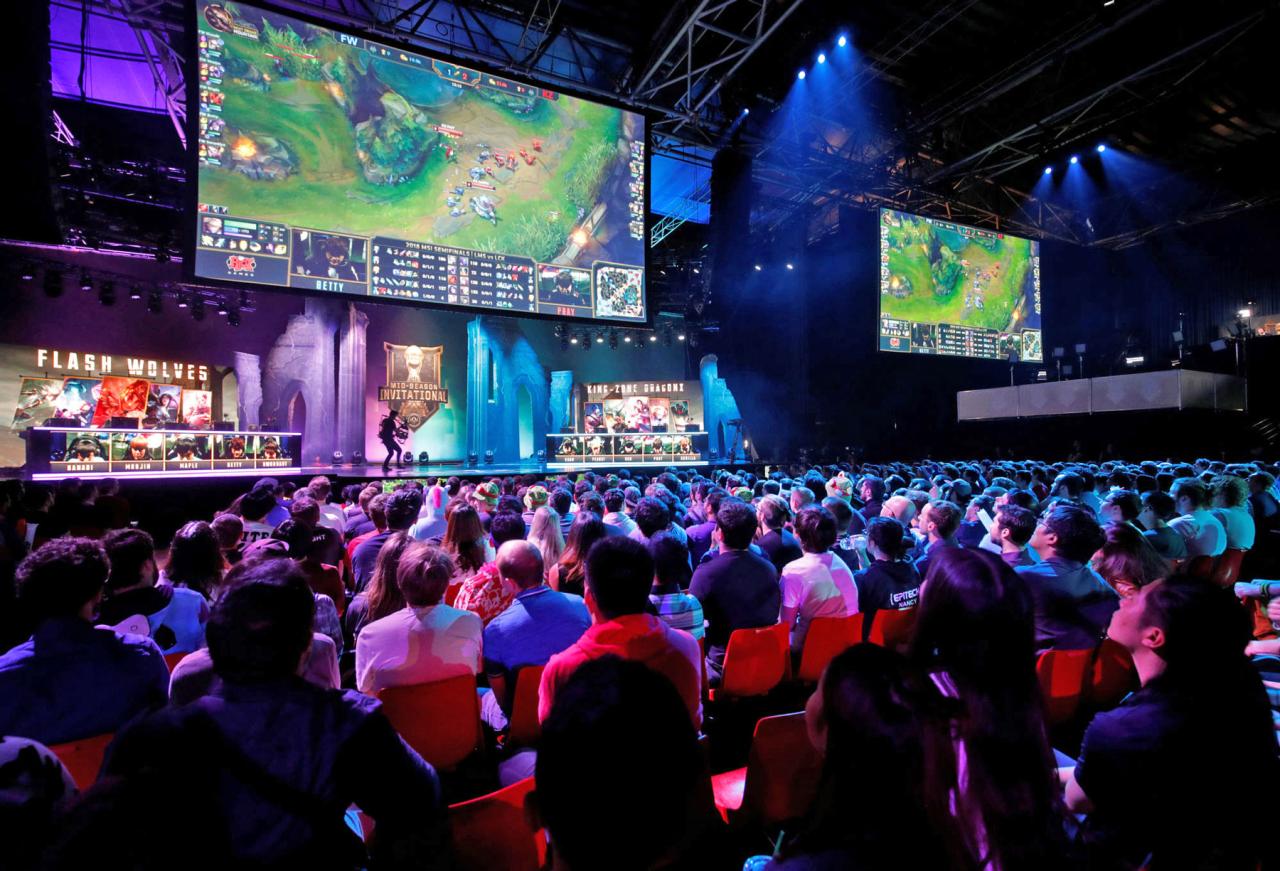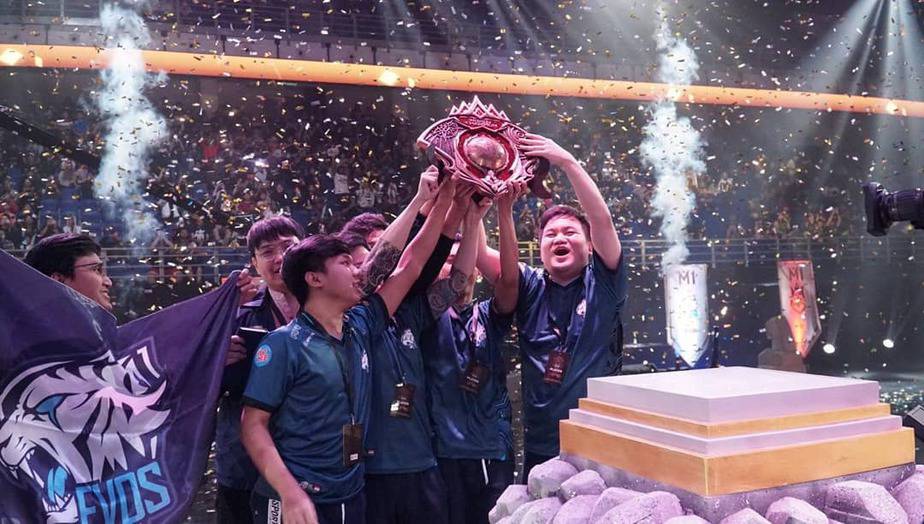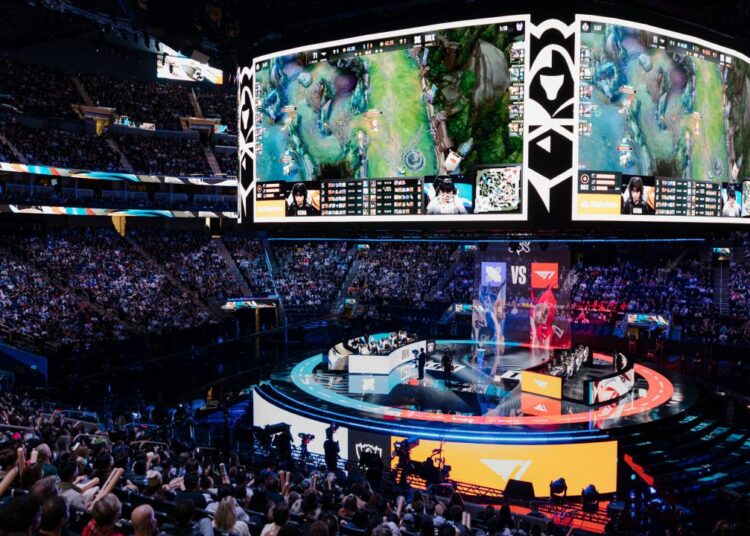The digital realm, once merely a space for casual entertainment, has exploded into a global phenomenon, giving rise to professional competition that rivals, and in some aspects surpasses, traditional sports. Esports, or electronic sports, has transcended its niche origins to become a powerhouse industry, captivating millions of viewers and offering lucrative careers for dedicated players.
What began as informal gatherings around arcade machines or local area network (LAN) parties has evolved into a sophisticated ecosystem of professional leagues, massive tournaments, and multi-million dollar prize pools. This comprehensive article delves into the meteoric rise of esports, exploring the underlying factors driving its exponential growth, the intricate infrastructure that supports its competitive integrity, the diverse community it fosters, and its profound impact on entertainment, technology, and culture worldwide. We’ll uncover why these digital gaming leagues are not just soaring, but redefining the very definition of competitive spectacle.
The Genesis and Evolution of a Global Phenomenon

The journey of esports from hobby to mainstream juggernaut is a fascinating tale of technological advancement, passionate communities, and strategic vision.
A. From Arcades to Online Arenas
The roots of competitive gaming can be traced back to the early days of arcade machines and home consoles.
- Early Tournaments (1970s-1990s): Initial organized competitions, such as the Space Invaders Championship in 1980, laid the groundwork. These were often informal and localized, lacking significant prize money or widespread recognition.
- The Rise of PC Gaming and LAN Parties: The advent of personal computers and multiplayer games like Doom, Quake, and StarCraft in the 1990s fostered a burgeoning competitive scene. LAN parties, where players physically brought their computers to a central location, became hotbeds for competitive play and community building. This period was crucial for developing the foundational competitive mechanics and fostering strong player communities.
- Internet’s Impact and Online Matchmaking: The widespread adoption of the internet revolutionized competitive gaming, enabling players from across the globe to compete without physical presence. Online matchmaking systems made it easier to find opponents, leading to a surge in participation and the formation of early online leagues. This was the true catalyst for scalability.
B. The Professionalization Era (2000s-Present)
The early 2000s marked a turning point, with increased investment, formal league structures, and rising prize pools.
- Founding of Key Leagues and Organizations: The establishment of professional leagues like Major League Gaming (MLG) and the Cyberathlete Professional League (CPL) provided structured competitive environments. Dedicated esports organizations began to form, signing players and attracting sponsorships.
- Growth of Streaming Platforms: The emergence of platforms like Twitch (launched 2011) and YouTube Gaming proved to be a monumental accelerant. These platforms allowed anyone to broadcast their gameplay, making esports accessible to a massive global audience and enabling players to build personal brands. This direct engagement with fans was revolutionary.
- Publisher Involvement: Game developers and publishers (e.g., Riot Games with League of Legends, Valve with Dota 2, Blizzard with StarCraft II) realized the immense marketing and community-building potential of esports. They began investing heavily, creating official league structures, organizing international tournaments, and directly supporting professional teams. This formalized the industry significantly.
- Mainstream Media Attention: As viewership numbers soared and prize pools grew, traditional media outlets began to take notice, further legitimizing esports in the eyes of the general public. Feature articles, news segments, and even dedicated esports channels started to emerge.
The Ecosystem of Professional Esports
The sophisticated world of esports is supported by a complex and interdependent network of stakeholders, each playing a crucial role in its continued growth and stability.
A. Players and Teams
At the core are the athletes themselves, who dedicate their lives to mastering their chosen game.
- Professional Players: These are highly skilled individuals who commit full-time to training, strategizing, and competing. They possess exceptional hand-eye coordination, reaction time, strategic thinking, and the ability to perform under immense pressure. Their careers often begin in their late teens and peak in their early to mid-twenties, though exceptions exist.
- Esports Teams/Organizations: These are professional entities that sign players, provide salaries, housing, coaching staff, mental health support, and manage sponsorships. They function much like traditional sports franchises, often with multiple teams across different game titles. Examples include Team Liquid, FaZe Clan, T1, and Gen.G.
- Coaching Staff: Including head coaches, analysts (who study opponent strategies and game meta), and sometimes even sports psychologists or physical trainers, optimizing player performance and team cohesion.
- Substitutes/Academy Teams: Mirroring traditional sports, larger organizations often have a roster of substitute players or entire academy teams to develop future talent.
B. Game Publishers and Developers
Publishers hold immense power and responsibility, as they control the very games being played.
- Game Design and Balance: They continually update and balance their games to ensure competitive fairness and freshness. This involves patching, introducing new content, and refining game mechanics based on competitive feedback.
- League Operations: Many publishers run their own professional leagues (e.g., League of Legends Championship Series (LCS), Overwatch League, Call of Duty League), managing scheduling, rules, officiating, and broadcasts.
- Event Organization: Publishers often organize the pinnacle events of their respective games, such as the League of Legends World Championship or The International (Dota 2), which draw massive viewership and offer staggering prize pools.
- Anti-Cheat and Competitive Integrity: Ensuring fair play through robust anti-cheat measures, strict rule enforcement, and investigations into competitive misconduct.
C. Tournament Organizers (TOs)
TOs are responsible for the logistics and execution of competitive events.
- Event Planning and Production: This includes securing venues, setting up competitive stages, managing broadcast facilities, and ensuring a seamless experience for players and viewers.
- Rules Enforcement and Officiating: Implementing and enforcing tournament-specific rules, resolving disputes, and ensuring fair play.
- Prize Pool Management: Administering and distributing prize money to winning teams and players.
- Broadcast and Spectator Experience: Creating engaging broadcasts with expert commentators, analysts, and high-quality production values to entertain audiences both online and live.
D. Broadcasters and Streaming Platforms
These platforms are essential for bringing esports to the masses.
- Twitch and YouTube Gaming: The dominant platforms for live streaming esports content, offering unparalleled reach and interactive features for viewers.
- Traditional Media Partnerships: Increasingly, major esports events are being broadcast on traditional sports networks (e.g., ESPN, truTV, BBC) or dedicated esports channels, expanding their audience.
- Content Creators and Casters: Professional commentators (casters), analysts, and content creators play a vital role in educating and entertaining audiences, making complex game mechanics understandable and exciting.
E. Sponsors and Advertisers
The financial backing from sponsors is crucial for the industry’s growth.
- Brand Integration: Non-endemic brands (e.g., automotive, soft drinks, financial services) and endemic brands (e.g., gaming hardware, energy drinks) invest heavily in esports through team sponsorships, league partnerships, and event advertising.
- Media Rights and Merchandise: Revenue streams from selling broadcasting rights to platforms and networks, as well as merchandise sales, contribute significantly to the ecosystem.
- Investment Firms and Venture Capital: Growing interest from traditional investment firms highlights the long-term financial viability and growth potential of esports.
The Mechanics of Esports Success

Becoming a top-tier esports athlete requires a highly specialized skill set and rigorous training.
A. Exceptional Mechanical Skill
This refers to a player’s ability to execute precise in-game actions rapidly and accurately.
- Hand-Eye Coordination: The ability to synchronize visual information with motor responses (e.g., aiming, clicking, keyboard inputs).
- Reaction Time: The speed at which a player can react to visual or auditory cues within the game. Milliseconds can separate victory from defeat.
- Micro-Management: Controlling individual units or character abilities with extreme precision and efficiency, often simultaneously.
B. Strategic and Tactical Acumen
Understanding the game on a deeper level, beyond just individual mechanics.
- Game Knowledge: A comprehensive understanding of game mechanics, character abilities, item synergies, and map layouts.
- Macro-Management: Strategic decision-making on a larger scale, such as map control, objective prioritization, and economy management.
- Adaptability: The ability to adjust strategies and tactics on the fly in response to opponent actions or changing game conditions.
- Team Communication: Effective and concise communication within the team is paramount for coordinating complex strategies and reacting to dynamic situations. This often involves specific in-game callouts and rapid decision-making.
C. Mental Fortitude and Resilience
The pressure in professional esports can be immense.
- Composure Under Pressure: Maintaining calm and making optimal decisions in high-stakes situations, such as late-game comebacks or decisive moments in a match.
- Emotional Regulation: Managing frustration, anger, and anxiety during competitive play and after losses.
- Resilience to Loss: The ability to bounce back from defeats, learn from mistakes, and maintain motivation.
- Focus and Concentration: Sustaining intense focus for extended periods during long matches or tournaments.
D. Rigorous Training Regimens
Professional esports athletes train with a discipline comparable to traditional athletes.
- Scrims (Scrimmages): Practicing against other professional teams in simulated competitive matches.
- VOD Review (Video on Demand): Analyzing past gameplay (both their own and opponents’) to identify mistakes, refine strategies, and understand meta shifts.
- Individual Practice: Dedicated time to hone mechanical skills, experiment with new techniques, and master specific in-game scenarios.
- Physical and Mental Health: Increasingly, teams incorporate physical exercise, proper nutrition, sleep hygiene, and psychological support to optimize performance and prevent burnout.
The Impact and Cultural Significance of Esports
Esports’ rapid ascent has implications far beyond just gaming.
A. Mainstream Entertainment and Viewership
Esports tournaments regularly draw audiences comparable to or exceeding traditional sports events.
- Massive Viewership: Major events attract tens of millions of unique viewers online, with peak concurrent viewership often in the millions. The League of Legends World Championship often surpasses the viewership of many traditional sporting finals.
- Live Events: Packed arenas and stadiums around the world host exhilarating live esports events, complete with elaborate stage setups, passionate crowds, and professional production.
- Accessibility: The digital nature of esports means it’s globally accessible with an internet connection, breaking down geographical barriers.
B. Economic Impact and Career Opportunities
Esports is a rapidly expanding economic sector.
- Lucrative Prize Pools: Top tournaments offer multi-million dollar prize pools, making competitive gaming a viable and attractive career path for elite players.
- Salaries and Endorsements: Professional players earn salaries from their teams, often supplemented by personal sponsorships, streaming revenue, and merchandise sales.
- Job Creation: The industry supports a vast array of jobs beyond players, including coaches, analysts, team managers, event organizers, broadcasters, marketing specialists, content creators, and sports scientists.
- Gaming Hardware and Software: The growth of esports fuels innovation and sales in gaming-specific hardware (PCs, peripherals), software, and network infrastructure.
C. Cultural Influence and Community Building
Esports fosters vibrant and diverse communities.
- Global Community: Esports transcends language and cultural barriers, uniting fans from different backgrounds under a shared passion for competitive gaming.
- Role Models: Top players become celebrities and role models for millions of aspiring gamers, inspiring dedication and hard work.
- Accessibility and Inclusivity: Esports can be more inclusive than some traditional sports, requiring less physical prowess and allowing for participation regardless of gender, physical ability, or background, as long as one has the skill and dedication.
- Innovation in Media and Technology: Esports pushes the boundaries of live production, interactive broadcasting, and online community engagement.
Challenges and Future Trajectories
Despite its immense success, esports faces ongoing challenges and exciting opportunities.
A. Sustainability and Financial Viability
While prize pools are large, ensuring long-term financial stability for all teams and players remains a focus.
- Team Profitability: Many esports organizations are still seeking consistent profitability, relying heavily on investor funding and sponsorship.
- Player Salaries and Longevity: Ensuring fair compensation across all tiers of play and providing pathways for players beyond their competitive careers.
- Diversification of Revenue: Exploring new revenue streams beyond sponsorships and media rights, such as merchandise, fan engagement platforms, and regional leagues.
B. Player Welfare and Health
The intense demands of professional gaming can take a toll.
- Physical Health: Addressing issues like repetitive strain injuries (RSI), eye strain, and sedentary lifestyles through specialized training and ergonomic setups.
- Mental Health: Providing psychological support to cope with performance pressure, online toxicity, burnout, and the transient nature of careers.
- Work-Life Balance: Encouraging healthy habits and ensuring players have adequate rest and time away from the game.
C. Competitive Integrity and Regulation
Maintaining fair play and preventing cheating are paramount for credibility.
- Anti-Cheat Measures: Continuous development of sophisticated anti-cheat software and hardware.
- Match-Fixing Prevention: Implementing strict rules and monitoring systems to prevent match-fixing and betting fraud.
- Doping Control: As the stakes increase, discussions around anti-doping policies (for performance-enhancing drugs or cognitive enhancers) are becoming more prevalent.
- Standardization: Developing consistent rules and regulations across different games and regions to foster a more unified competitive landscape.
D. Expanding Audiences and Mainstream Acceptance
The push for broader recognition continues.
- Bridging the Gap with Traditional Sports Fans: Efforts to make esports more understandable and appealing to audiences accustomed to conventional sports, through better storytelling, accessible commentary, and simplified formats.
- Grassroots Development: Investing in amateur and semi-professional leagues to build a robust talent pipeline and engage local communities.
- Global Expansion: Continuing to grow esports in emerging markets, particularly in regions where internet penetration is rapidly increasing.
Conclusion
Esports has unequivocally established itself as a major force in the global entertainment and competitive landscape. What began as a niche pastime has blossomed into a multi-billion dollar industry, driven by passionate players, innovative publishers, and an ever-expanding global fanbase. The soaring digital gaming leagues represent a profound cultural shift, demonstrating that competitive excellence knows no bounds, whether on a physical field or within a virtual arena. As technology continues to advance and its ecosystem matures, esports is poised for even greater heights, redefining what it means to be an athlete, captivating audiences worldwide, and solidifying its position as a truly global phenomenon that continues to soar into uncharted competitive territories.











